Cleaning Procedure
Tools Required
J 8089 Carbon Removing
Brush
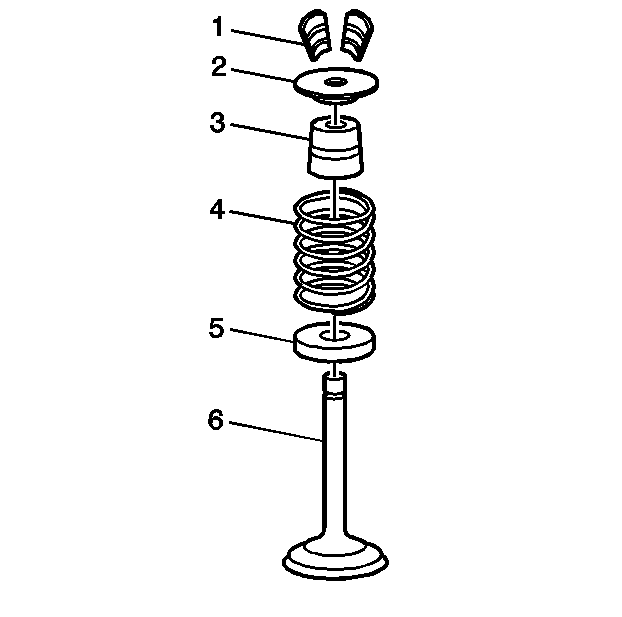
Caution: Wear safety glasses in order to avoid eye damage.
Important: Mark, sort, or organize components for return to their original locations.
- Clean the valve heads on a buffing wheel.
- Clean the following components in solvent
Caution: Wear safety glasses in order to avoid eye damage.
- Dry the components with compressed air.
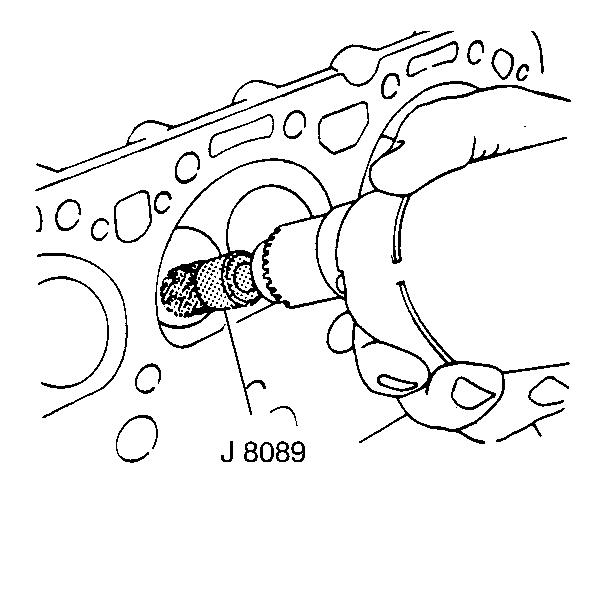
Important: Be careful not to scuff the chamber or damage the valve seat.
- Use the J 8089
in
order to clean the carbon from the combustion chambers.
Visual Inspection Procedure
Inspect the cylinder head for the following conditions:
| • | Damaged gasket surfaces |
| • | Damage to threaded bolt holes |
| • | Burnt or eroded areas in the combustion chamber |
| • | Cracks in the exhaust ports and combustion chambers |
| • | External cracks in the water chamber |
| • | Restrictions in the intake or exhaust passages |
| • | Restrictions in the cooling system passages |
Flatness Measurement Procedure
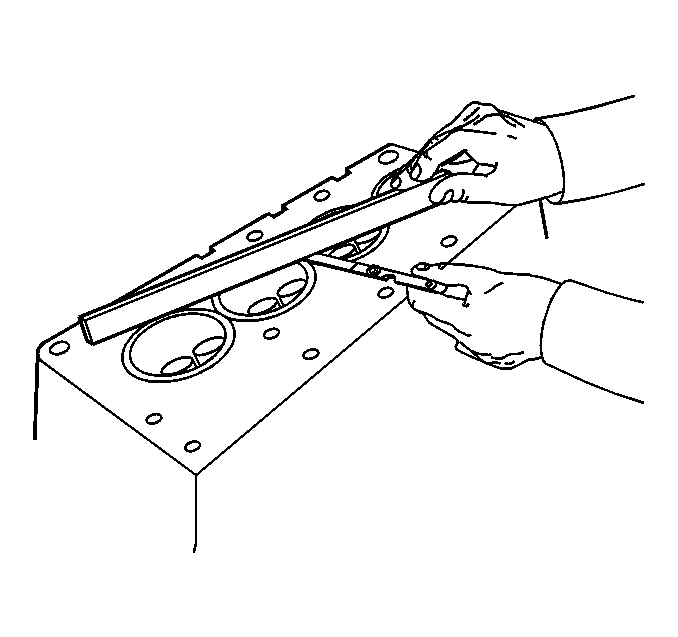
- Measure the cylinder head
for warpage with a straight edge and feeler gauge.
| • | A cylinder head block deck with warpage in excess of 0.076 mm
(0.003 in) within a 152.4 mm (6.0 in) area must be repaired
or replaced. |
| • | A cylinder head exhaust manifold deck with an overall warpage
in excess of 0.152 mm (0.006 in) must be repaired or replaced. |
| • | A cylinder head intake manifold deck with warpage in excess of
0.10 mm (0.004 in) must be repaired or replaced. |
- A cylinder head block deck can be resurfaced up to 0.305 mm
(0.012 in) maximum removal.
Important: Excessive cylinder head resurfacing will affect compression ratio and
emission control.
- A cylinder head that requires excessive resurfacing must be replaced.
Valve Inspection Procedure
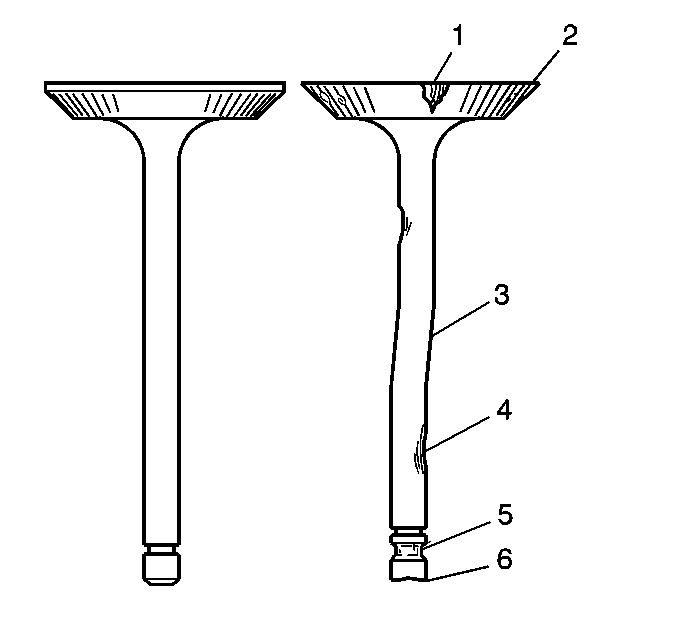
- Inspect the valves for
the following conditions:
| • | Burnt or damaged areas (1) |
| • | Undersized valve margin (2) |
| • | Wear, scoring or other damage to the stem (4) |
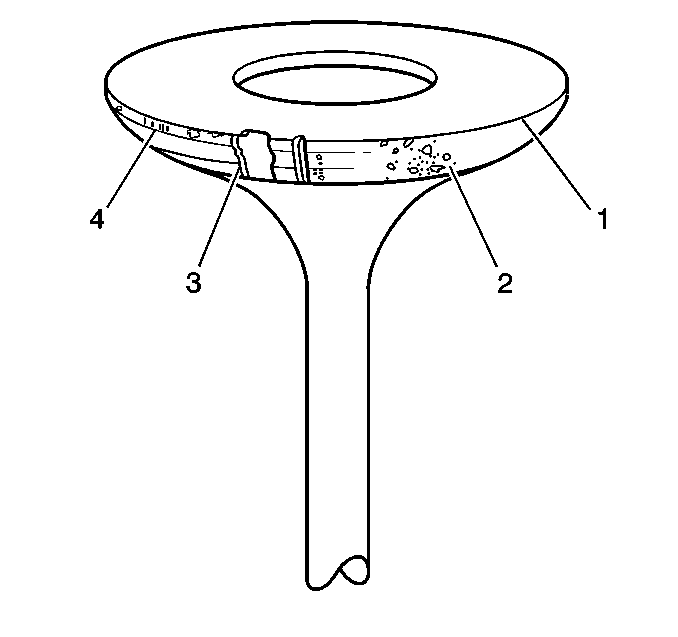
- Inspect the valve contact
surface for the following conditions:
| • | Burnt or eroded areas (3) |
| • | Acceptable edge (margin) (4) |
Important: Minor imperfections of the valve may be corrected during reconditioning.
- Valves with excessive damage must be replaced.
Valve Spring Inspection and Measurement
Tools Required
J 9666 Valve Spring
Tester
- Inspect the valve springs for broken coils or coil ends.
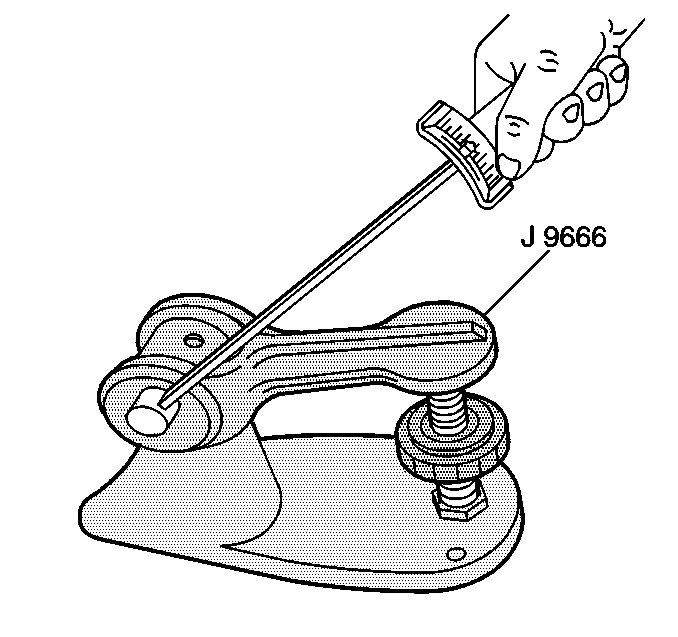
- Use the J 9666
in order to measure the valve spring
tension. Refer to
Engine Mechanical Specifications
.
Important: Add a maximum of one shim up to 0.726 mm (0.030 in) thick
to increase tension.
- If low valve spring tension is found, use a shim to increase tension.
- Recheck the valve spring tension, a valve spring that does not
meet specification must be replaced.
Valve Guide Measurement Procedure
Tools Required
J 8001 Dial Indicator
Set
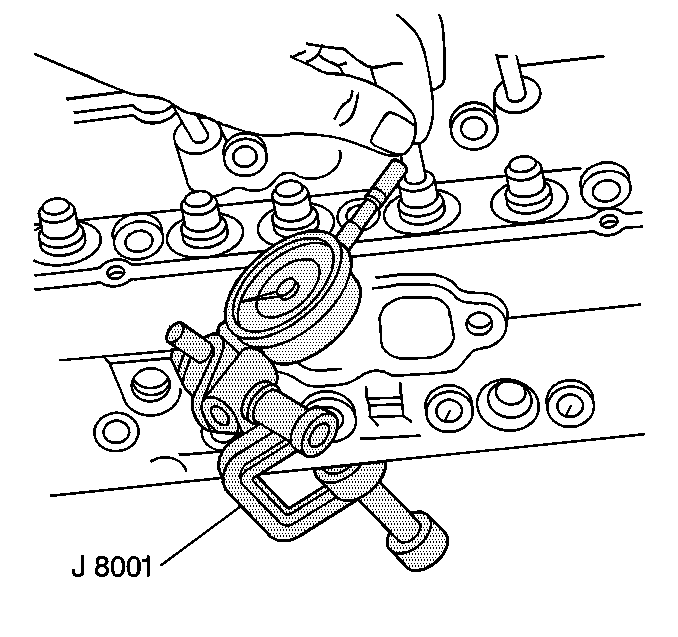
Important: Excessive valve stem-to-guide clearance may cause an excessive
oil consumption and may also cause a valve to break. Insufficient clearance
will result in noisy and sticky functioning of the valve and will
disturb the engine assembly smoothness.
- Measure the valve stem-to-guide clearance.
| • | Clamp the J 8001
on
the exhaust port side of the cylinder head. |
| | Important: The indicator stem must contract the side of the valve stem just above
the valve guide.
|
| • | Locate the indicator so that the movement of the valve stem from side
to side (crosswise to the cylinder head) will cause a direct movement of
the indicator stem. |
| • | Drop the valve head about 1.6 mm (0.064 in) off
the valve seat. |
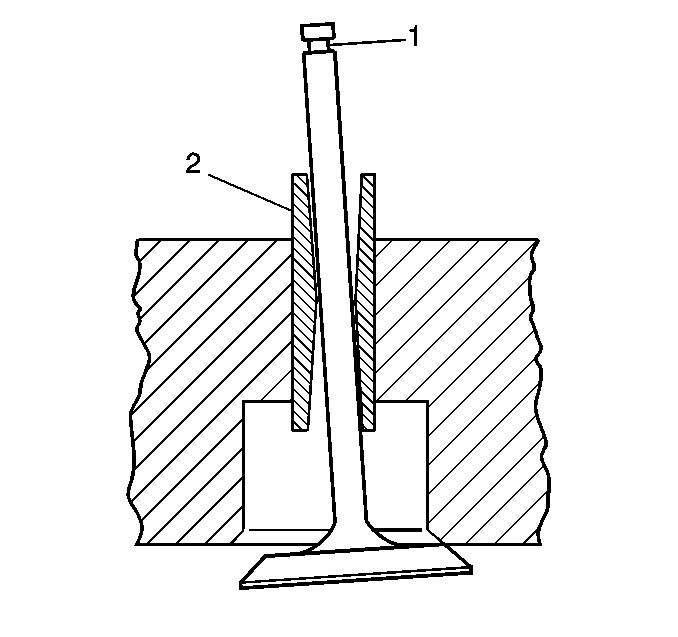
- A valve guide (2)
with excessive clearance must be repaired. Refer to
Valve Guide Reaming, and Valve and Seat Grinding
.
- Replace the cylinder head if the valve guide cannot be repaired.








